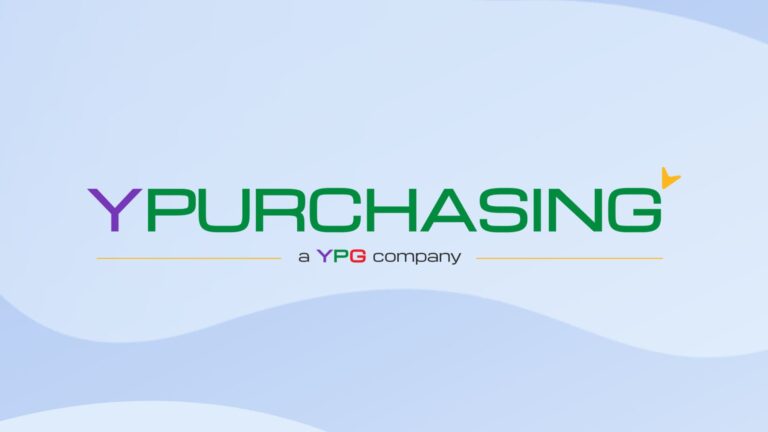
Managing Procurement Risk with a Group Purchasing Organization
Explore how a group purchasing organization can be an effective solution for managing procurement risk and improving overall procurement processes.
By Hugo Britt | May 25, 2023
Things were looking so bright at the beginning of the year. As the CEO of a fledgling company, you were proud of its solid growth and strong performance. But six months later, disaster has struck. Your reputation has been shot to pieces, your bottom line is in a dire state, and your customers are fleeing to your competitors.
Feeling like the captain of a sinking ship, you summon the leadership team to your office and ask them what happened. After a moment’s silence, the CFO steps forwards and shrugs resignedly.
“I guess we failed to manage our procurement risk…”
Below, we explore the concept of procurement risk and the challenges it poses to organizations. We also discuss how a group purchasing organization (GPO) can be an effective solution for mitigating procurement risk and improving overall procurement processes.
Understanding procurement risk
Procurement risk can arise from a variety of sources, including supplier-related issues, market volatility, regulatory changes, and natural disasters. Even if a risk lies outside of your control, it’s procurement’s responsibility to have a plan to deal with any type of disruption.
Hot tip: Never underestimate the potential impacts of procurement risk. The scale and severity of risk impacts can vary dramatically, from minor inconveniences and lower profits to reputational damage, production grinding to a halt, and even bankruptcy.
First, business leaders need to fully understand the concept of procurement risk and the challenges that come along with it. Only then will they begin to implement the right strategies to mitigate it's impact to the organization.
How to identify procurement risks
There’s no one-size-fits-all approach to procurement risk management. Risks vary dramatically in nature, so your response will need to be tailored to suit every scenario.
Common procurement risks include supplier bankruptcy, quality issues, delivery delays, price fluctuations, and non-compliance with regulations. By conducting a comprehensive risk assessment, organizations can develop strategies to mitigate these risks and protect their supply chains.
Hot tip: It’s impossible to make a plan for every possible risk scenario, but it is possible to build a risk management framework that is agile enough to apply to different types of risk.
Challenges of procurement risk management
Why is procurement risk management so difficult?
If there’s one factor that will dramatically improve your risk profile, it’s spend visibility. Procurement teams generally have great visibility of exactly how much money is spent and who it is spent with – but only for the top 20% of suppliers. Sub-threshold spend is a very different story, as so many transactions take place off the radar. That’s why getting your spend data under control and creating a centralized source of truth is a crucial first step.
Alongside limited visibility into suppliers’ financial health, inadequate risk mitigation strategies and fragmented procurement processes can all contribute to increased vulnerability. Additionally, managing risk across multiple categories and geographies can be complex and time-consuming.
Through supplier due diligence, competitive pricing, risk diversification, and more, GPOs can help organizations of all sizes effectively manage procurement risk.
Managing procurement risk with a group purchasing organization
You probably already know that a group purchasing organization (GPO) leverages the collective buying power of its members to negotiate and secure advantageous contracts with suppliers. By joining a GPO like Una, you’ll gain access to a network of pre-vetted suppliers, benefit from volume-based pricing, and streamline your procurement process.
But did you also know that a GPO can help you manage procurement risk?
Here’s how:
- Supplier Due Diligence: GPOs perform rigorous due diligence on suppliers, including financial checks, quality assessments, and regulatory compliance verification. This helps mitigate the risk of partnering with unreliable or non-compliant suppliers.
- Competitive Pricing: GPOs negotiate deep discounts and contract terms with suppliers on behalf of their members. By leveraging the collective buying power of multiple organizations, GPOs can secure better pricing than individual businesses could achieve on their own.
- Risk Diversification: GPOs offer access to a diverse supplier base, reducing the reliance on a single supplier. This diversification minimizes the risk of disruptions caused by supplier bankruptcy, delivery delays, or quality issues.
- Expertise and Support: Una provides expertise and support with procurement best practices, contract management, and risk mitigation strategies. Our dedicated team assists members in navigating complex procurement landscapes and addressing specific risk concerns.
- Market Insights: GPOs like Una keep members informed about market trends, regulatory changes, and emerging risks. This enables organizations to proactively adjust their procurement strategies and stay ahead of potential challenges.
Procurement risk can have significant consequences for businesses, but organizations can effectively mitigate these risks by partnering with a GPO.
GPOs like Una offer access to a robust supplier network, competitive pricing, risk diversification, and expert support, enabling businesses to optimize their procurement processes while safeguarding against potential disruptions. By embracing the benefits of a GPO, organizations can enhance their procurement strategies and drive sustainable growth in an increasingly complex business environment.
For an in-depth look, download our newest playbook to better understand the GPO’s role in managing procurement risk.






